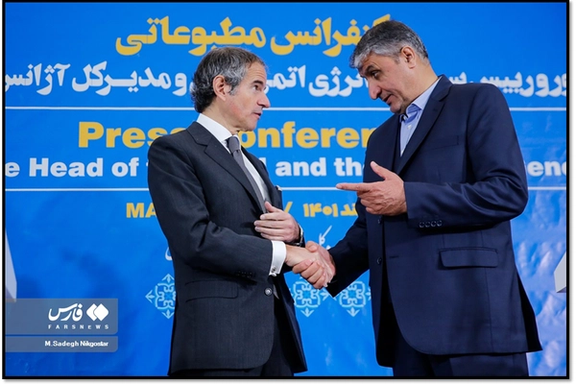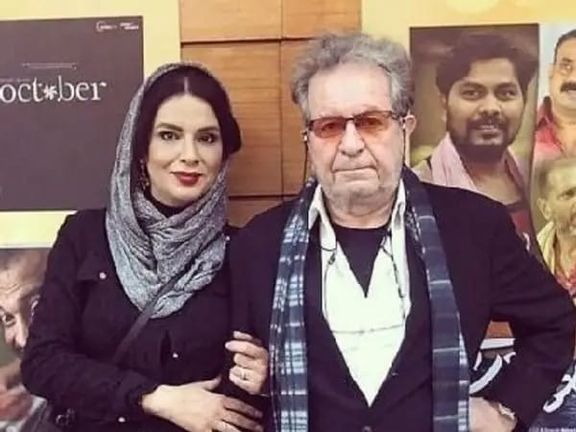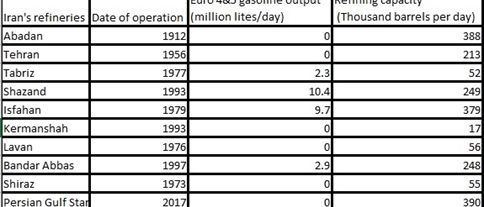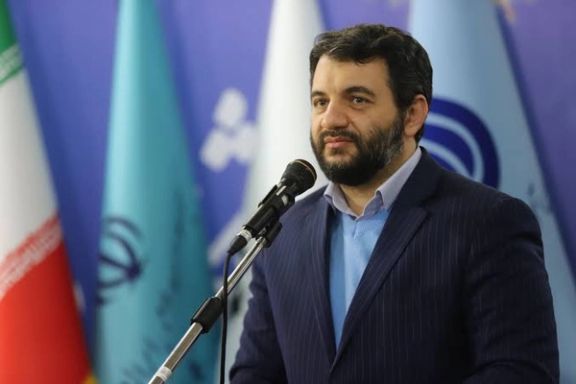Housing Price Surge Continues In Tehran Amid Iran's Economic Turmoil

The latest report from the Iranian government has revealed that housing price surges in Tehran show no signs of abating.

The latest report from the Iranian government has revealed that housing price surges in Tehran show no signs of abating.
The annual inflation rate of apartments in the capital city has skyrocketed to 82.8 percent in the month of Dey (December 22 to January 20).
The Statistical Center of Iran, affiliated with the Organization of Planning and Budget, disclosed on Monday that the monthly housing inflation in Tehran for the month stood at 2.2 percent. The average price of apartments sold in the capital has surged to 806 million rials per square meter, equivalent to approximately $1,500.
The report also delineated the varying degrees of price hikes across Tehran's districts, with district one experiencing the highest increase and district 18 witnessing the lowest among the 22 districts.
The escalation in housing costs comes amid economic turmoil compounded by runaway inflation and a rapidly depreciating national currency. Iran's rial continues to plummet against the US dollar, with one US dollar now surpassing 550,000 rials, exacerbating the financial strain on citizens.
Furthermore, concerns over homelessness have been echoed by the Research Center of the Parliament, attributing the situation to "gross failures" within the housing system. Decades of policies, the center asserts, have disproportionately impacted low-income and vulnerable groups, exacerbating social inequalities.
In a country where real estate serves as a primary asset for safeguarding savings amidst currency devaluation, the surge in property prices underscores broader economic challenges. With the value of the national currency plummeting at least tenfold since 2017, Iranians are increasingly grappling with the erosion of their purchasing power and the imperative to safeguard their wealth amid economic uncertainty.

In an alarming development, Ali-Akbar Salehi, the former head of Iran's nuclear agency has implied in remarks broadcast on Monday that Iran has everything it needs for an A-bomb.
In a televised interview, Salehi, who was also foreign minister (2010-2013), was asked if Iran has achieved the capability of developing a nuclear bomb. Avoiding a direct answer he stated, "We have [crossed] all the thresholds of nuclear science and technology. Here's an example: Imagine what a car needs; it needs a chassis, an engine, a steering wheel, a gearbox. You're asking if we've made the gearbox, I say yes. Have we made the engine? Yes, but each one serves its own purpose," the senior regime insider said.
The likelihood of Iran acquiring nuclear weapons has been a prevalent concern for analysts and officials in the region and in Western countries, but recently the Islamic Republic has become more vocal about its military and nuclear progress. While Tehran insists that its nuclear program is peaceful, the regime has sped up its uranium enrichment to levels that serve no purpose other than building nuclear weapons.
The global community has been aware of Iran’s nuclear advancement, acknowledged in numerous reports by the United Nation’s nuclear watchdog, the IAEA. However, except US sanctions, other countries and the United Nations have taken no effective measures.
This is not the first time that officials of the Islamic Republic have claimed to have the ability to build a nuclear bomb. In July 2022, Kamal Kharrazi, the head of the Strategic Council for Foreign Relations of the Islamic Republic and a close advisor to Supreme Leader Ali Khamenei, said in an interview with Al Jazeera that Iran had the technical capabilities to build a nuclear bomb but does not intend to do so.

"We have increased the level of uranium enrichment from 20 percent to 60 percent in just a few days, and it can easily be enriched to 90 percent," Kharrazi said, implying that Iran is very close to making nuclear weapons.
His statement came as Mohammad Eslami, the head of the Atomic Energy Organization of Iran, has never dismissed the possibility of enrichment to the level required for bomb-making, reiterating that the decision for 90 percent uranium enrichment depends on higher authorities, meaning Khamenei.
In January, a TV host in Iran suggested on an IRGC-affiliated channel that it is perhaps time to produce nuclear weapons, sparking controversy. The host, Hossein Hosseini, said, "Is it not time for Iran to produce its first nuclear weapon, given the ongoing conflict against Gaza and repeated threats from Israel?" Eslami, in response, said that “the production of weapons of mass destruction has never been part of Iran's defensive doctrine and is not aligned with its foreign policy," despite the country's ongoing enrichment effort.
Islamic Republic officials have repeatedly stated that according to a fatwa (Islamic decree) by the Supreme Leader, the construction of an atomic bomb is not on Tehran's agenda. However, few in the international community believe in a fatwa that can be revoked at any moment.
In an interview with Iran International on February 8, leading nuclear weapons expert David Albright warned that this is the time when “Iran may decide to make nuclear weapons.”
“You have a situation where the security incentives for Iran to build nuclear weapons have increased,” he pointed out. “The transparency of the nuclear program has decreased significantly.. Their nuclear weapons capabilities have grown over the last several years… And it's also a point in time where people's attention is elsewhere. The Iran nuclear issue barely makes the newspapers these days.” In the past two decades, every US president has announced that a “nuclear Iran” will not be tolerated, often stressing that “all options are on the table” to prevent the regime in Tehran acquiring nuclear weapons. And in the meantime, Iran has advanced its nuclear capabilities in every respect.

But Albright believes a “balancing act” is possible if the US and Israel move swiftly to make the regime understand “it's not in its interest to build nuclear weapons” before it reaches a definite conclusion that it has to have “nuclear deterrent” against the US and Israel.
“We're worried that the US and Israeli intelligence agencies are distracted,” Albright told Iran International, “and Israeli intelligence isn't foolproof, as this attack on October 7th proved in a very dramatic way.
According to Al Jazeera, “a confidential IAEA report released last month indicated that Iran’s estimated stockpile of enriched uranium had reached more than 22 times the limit" set out in the 2015 JCPOA accord between Tehran and world powers.
In June 2022, Iran removed all IAEA surveillance and monitoring equipment, needed to monitor the implementation of the 2015 JCPOA nuclear accord from its nuclear installations and since March it agreed to put them back on operation, but it has been stonewalling the process ever since.
IAEA Director-General Rafael Grossi said in December that inspectors “confirmed…an increased production of highly enriched uranium at both of Iran’s main nuclear facilities.” Speaking to Bloomberg on the sidelines of the World Economic Forum in Davos in January, Grossi reiterated his concerns that no technical obstacle remains between Iran and a nuclear bomb, implying that the regime can make them now if it wanted to.
Condemning Iran's advancement, the US said the December 26, 2023 report by the IAEA highlighted that Iran has increased its rate of production of uranium enriched up to 60% at Natanz and Fordow to levels observed between January and June 2023. "These findings represent a backwards step by Iran and will result in Iran tripling its monthly production rate of uranium enriched up to 60%."

The primary suspect in the murder of renowned Iranian director Dariush Mehrjui and his wife, has been sentenced to death.
The Chief Justice of Alborz Province, Hossein Fazeli Harikandi said the court has sentenced the second and third-row defendants to 36 years in prison, lashes, and blood money.
Mehrjui and his wife, Vahideh Mohammadifar, a screenwriter and costume designer, were brutally murdered, found mutilated in October at their private villa in Zibadasht Fardis, Alborz Province, suffering multiple stab wounds.
According to the Faraz Daily news website, the perpetrators cut the throats of the couple and broke their arms and legs. Mehrjui’s head was beaten with a blunt object and his wife was almost beheaded.
The trial of the defendants took place on January 17 and 18 in Branch One of the Criminal Court of Alborz Province. Following the first session, the primary suspect denied the murder charge, claiming to have confessed under duress. They also denied involvement in theft.
Shortly before the double murder, Mohammadifar had reported a confrontation with a knife-wielding burglar outside their home who had threatened to kill her.
The couple had been threatened with death multiple times before their murders and although Mehrjui had reported these to the police on multiple occasions, the police did not take them seriously.

One quarter (23%) of road deaths in Tehran are drivers of domestically manufactured low-quality cars, most notably, the infamous Pride, according to Iran's judiciary.
“Contrary to the prevailing trend worldwide, where the highest deaths from accidents occur outside of cities, in Tehran Province, the highest number of fatalities is related to Tehran city, with 23 percent of the deaths being attributed to users of Pride cars,” said Abolfazl Nikoukar, social deputy of Tehran province's judiciary.
Deputy Traffic Police Chief Teimour Hadianfar recently labeled Iranian cars as "death wagons," lambasting manufacturers for poor quality control, particularly with imported parts sourced from China.
Iran's automotive sector, a vital component of the nation's economy, employs around 700,000 workers. Despite its significance, the industry faces growing scrutiny due to persistent safety concerns and a lack of effective regulation.
Iran's poor traffic safety record is evident in its annual death toll, estimated at approximately 20,000 deaths. World Health Organization (WHO) data from 2018 revealed that road traffic accident deaths in Iran accounted for 6.5 percent of all fatalities, highlighting the pressing need for comprehensive reforms to enhance road safety nationwide.
The statistics come on the eve of Iranian new year, Nowruz, when road deaths typically spike as Iranians travel the country for holidays and family visits.
Iranian Traffic Police said more than 85,000 car accidents occurred during the Nowruz holidays last year, with 871 people killed, one third of those, children.
The statistics were dominated by two Iranian made cars, notorious for their poor quality, in addition to the poor infrastructure of Iran’s roads.

Iran, ranked as the 11th largest consumer of petroleum products globally, grapples with an increasingly unprofitable and outdated crude oil refining sector.
The majority of its petroleum products, approximately 85percent, are sourced from refineries established before the Islamic Revolution in 1979.
According to an official document, prepared by Iran’s oil ministry and seen by Iran International, only three of its nine crude oil refineries have beenoperationalized post-1979, with combined capacity of less than 265,000 barrels per day. Originally constructed based on Western licenses, these refineries now rely on domestic or Chinese technologies for upgrades.
Iran's refining facilities primarily yield bitumen and mazut from crude oil, with a minimal portion meeting global standards for gasoline and other petroleum products. The report reveals that only 25 percent of gasoline and 54 percent of gasoil (diesel) produced meet Euro 4 or Euro 5 standards.
In 2015, shortly after the JCPOA was sealed, Iran's oil ministry proposed a $43 billion plan to modernize its refineries and increase crude oil refining capacity by 25 percent to 2.2 million barrels per day. Contracts were signed with companies like South Korea's Daelim Industrial and SK Engineering and Construction, as well as China's Sinopec, to upgrade refineries. However, all agreements were scrapped following the US withdrawal from the JCPOA in 2018 and subsequent sanctions on Iran.
Despite the construction of the Persian Gulf Star refinery in 2017, which uses domestic and Chinese technologies to refine gas condensate, it does not produce standard gasoline or diesel. The refinery's focus on gas condensate, an ultra-light oil extracted from gas fields, further underscores Iran's challenges in modernizing its refining capabilities.

The oil ministry's document reveals that less than 25 percent of domestically produced gasoline meets Euro 4 and 5 standards, and it is only available in eight out of 31 provinces. In the remaining provinces, non-standard gasoline is utilized. However, the most concerning issue with the country's refineries is the conversion of 30 percent of crude oil into highly polluting mazut and bitumen. According to the oil ministry's report, Abadan, the nation's largest refinery with over a century of operation, converts 44 percent of crude oil into mazut and bitumen.

Iran's refineries not only convert 30 percent of crude oil into mazut and bitumen, but they also produce highly sulfur-laden fuel, with a sulfur content of 3.5 percent. This sulfur level exceeds the required standards for fuel used in ships navigating open seas by sevenfold. Despite its environmental hazards, Iran utilizes this highly polluting fuel in power plants and industries located within or near urban areas.
According to the oil ministry's report, Iran's consumption of mazut surged by 110 percent last year, reaching about 9 million metric tons. This sharp increase reflects the country's ongoing struggle with gas shortages since 2018. In response, Iran has been gradually substituting diesel and mazut with gas in both industrial and electricity generation sectors.
Data from Klpler's statistics, obtained by Iran International, reveals that Iran's exports of diesel and gasoline hit zero in 2021. Meanwhile, mazut exports experienced a significant decline, plummeting by 42 percent to 217,000 b/d between 2021 and 2023 due to escalating domestic demands.

Iran grapples with exacerbated gas shortages during winters, leading to a doubling of mazut consumption in the power sector and industries, a highly polluting practice. Additionally, the country has been contending with gasoline shortages since mid-2022.
According to documents from the oil ministry obtained by Iran International, Iran produced 96 million liters per day of gasoline, marking a modest 0.75 percent increase compared to the previous year. However, consumption surged by 13 percent to reach 116 million liters per day during the first seven months of the current fiscal year, which began on March 22, 2023.
To partially address the deficit, Iran augmented its gasoline supply by adding 13 million liters per day of chemicals, aromatics, and the carcinogenic substance MTBE (Methyl-tertiary-butyl ether), a gasoline additive known to cause testicular and lymphohematopoietic cancers in rats. Despite these measures, the remaining shortfall was filled by importing gasoline or drawing from existing storage reserves. Notably, Iran's gasoline storage as of September 2023 declined by 30percent year-on-year, dropping to below 800 million liters, equivalent to just one week's worth of consumption volume.

Oil revenues will fund a $700m Persian Gulf Bridge project in the south of Iran connecting the Qeshm Free Zone to the mainland, claims Tehran.
The Secretary of the Supreme Council of Free Zones in Iran, Hojjat Abdolmaleki said: "We have also had negotiations with Chinese contractors, and it is planned for the project to be among the finance and credit line projects of Iran and China."
His comments come as Iran is offering substantial price reductions to its principal oil buyer, China, which also barters goods and services with Iran in exchange for oil amidst global sanctions.
"The President has ordered the allocation of resources from the general budget and from oil barter, and we are striving to put the project into operation within the next three years," he added.
"Approximately $700 million is needed for the entire project, including the completion of railways and highways, but its benefits for the country are very high."
Just last week, Iran announced a $20-billion high-speed train network which it said is to be funded through the National Development Fund and oil barter agreements amid the country's worst ever economic crisis.
In 2021, Tehran and Beijing signed a controversial 25-year co-operation deal which was first proposed by Iran's Supreme Leader Ali Khamenei during President Xi’s visit to Tehran in 2016.
Its details have never been disclosed and a leaked copy of the final text only outlines the general terms of the agreement. Tehran officials, beleaguered by an economic crisis they cannot solve, hoped it would bring billions in investment and make Iran part of China' Belt and Road Initiative, a multi-trillion-dollar infrastructure scheme intended to stretch from East Asia to Europe.